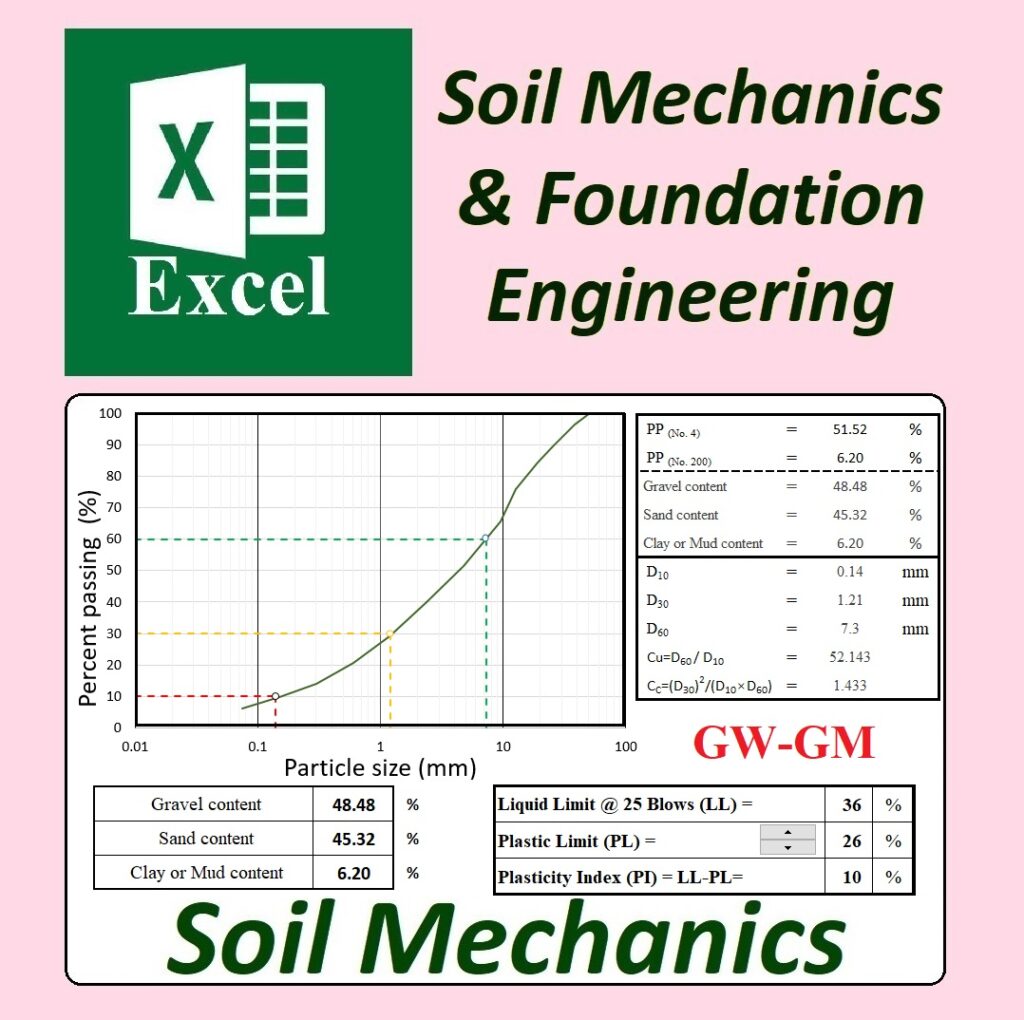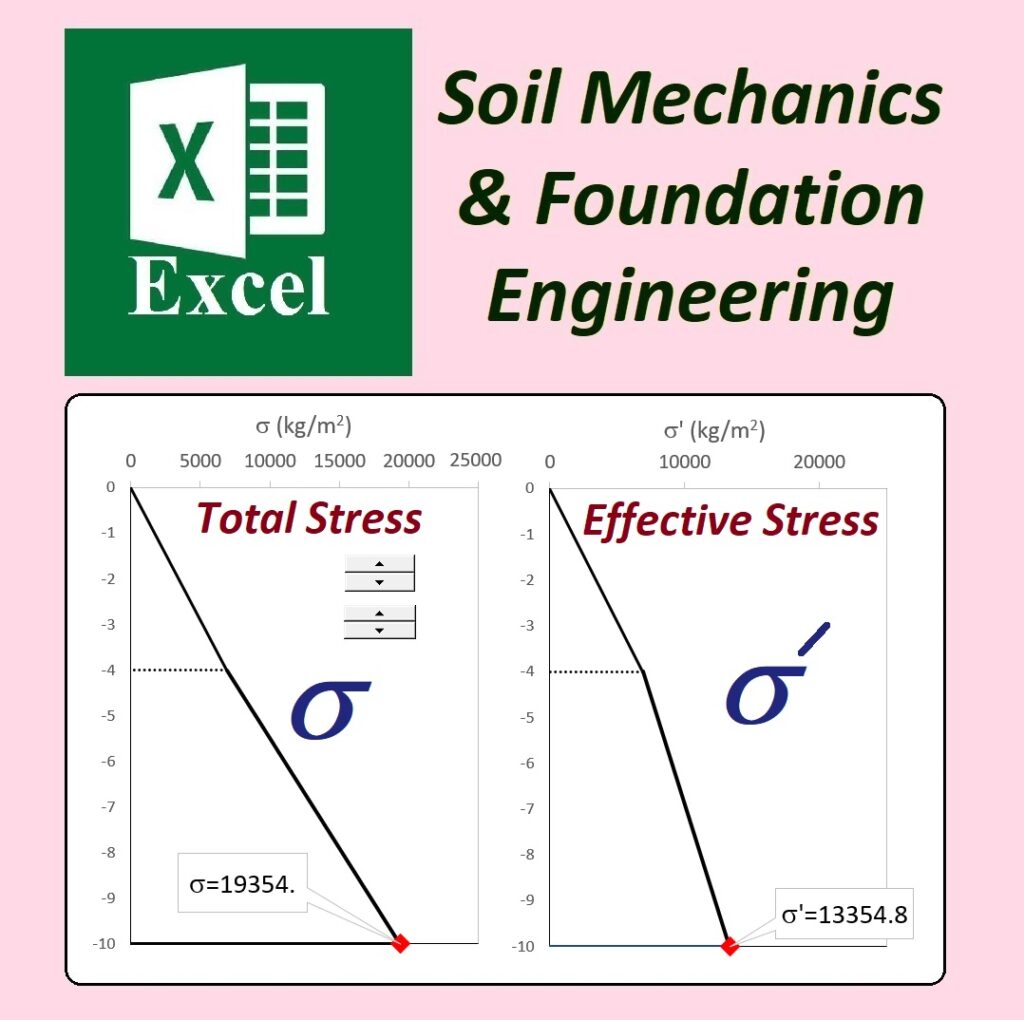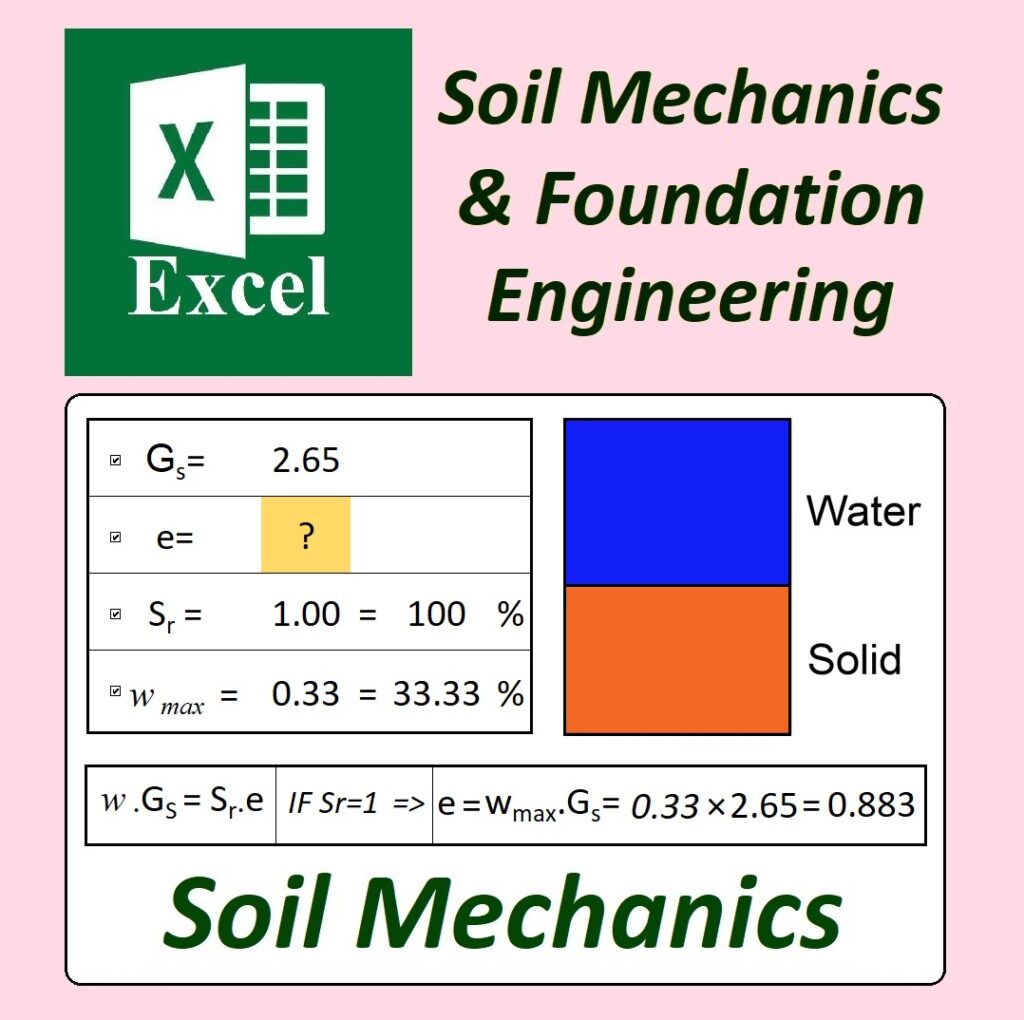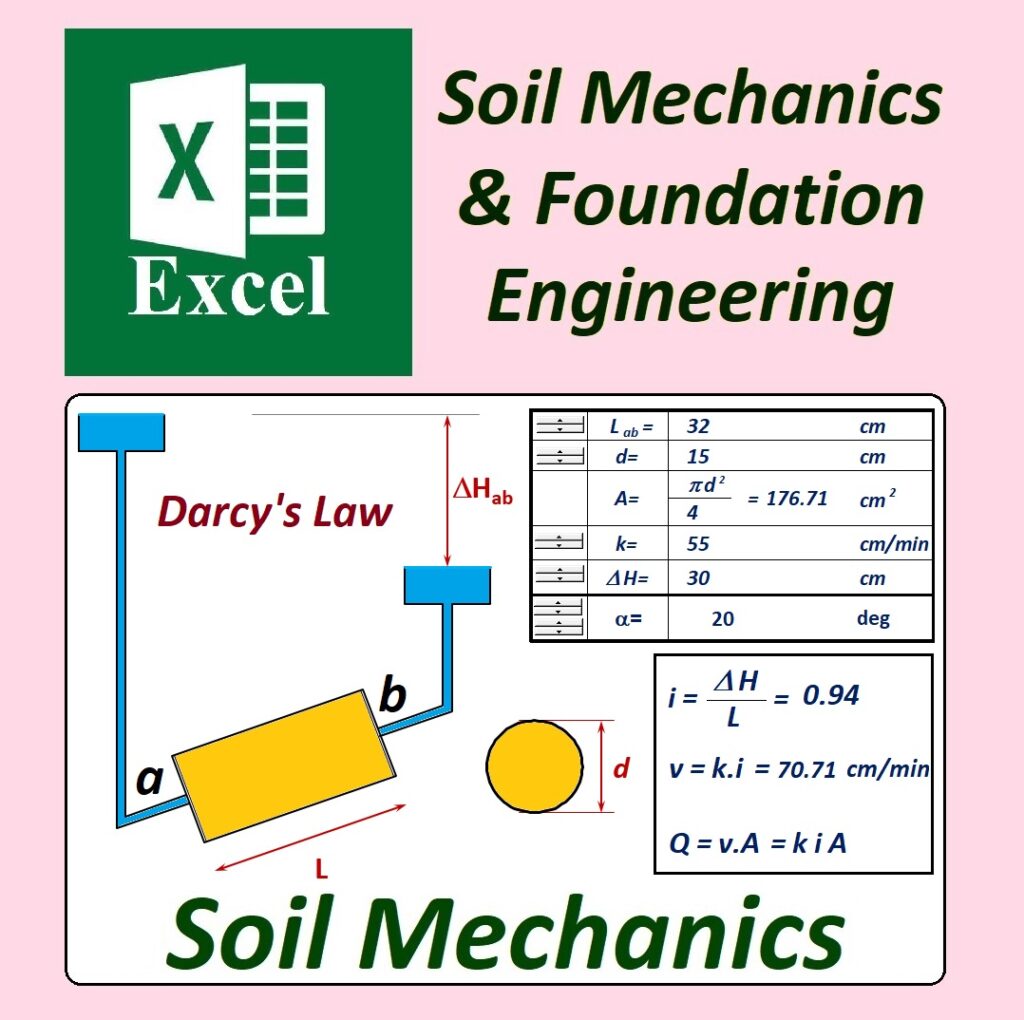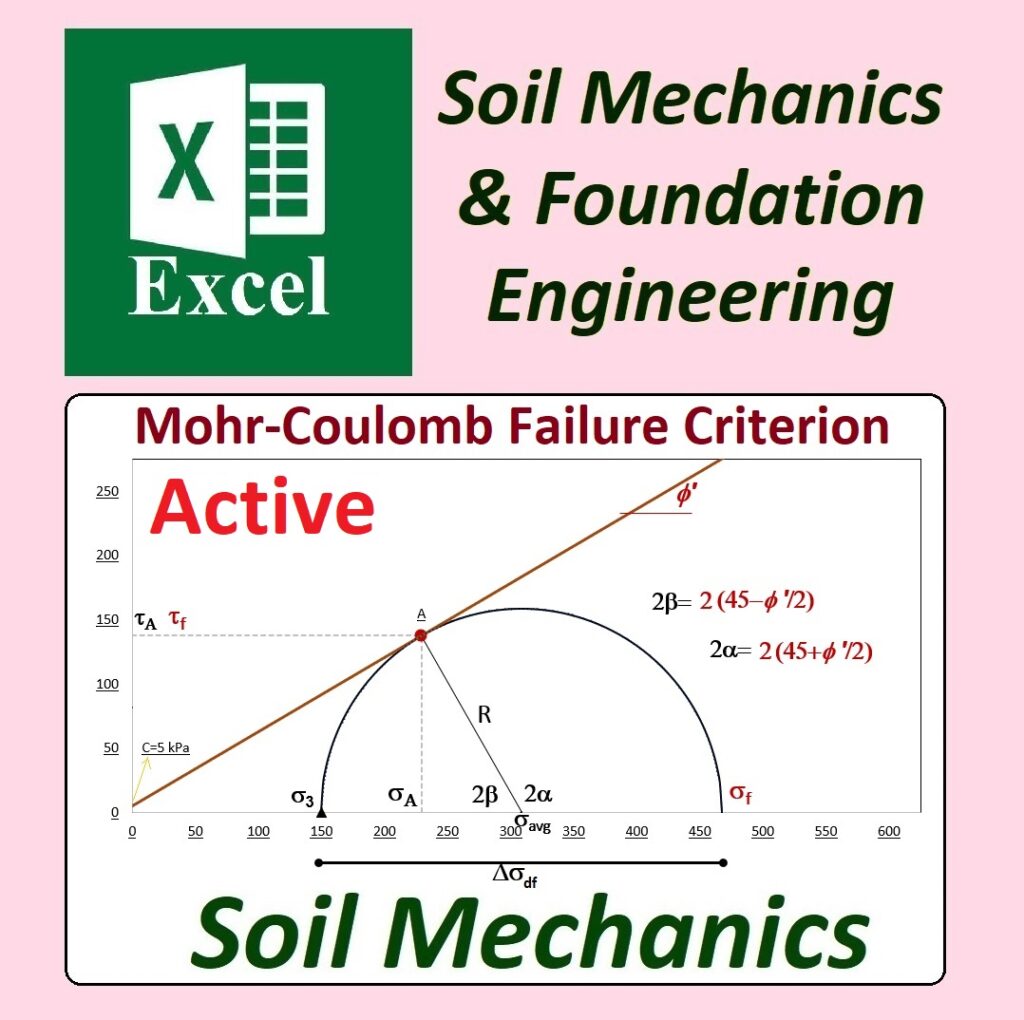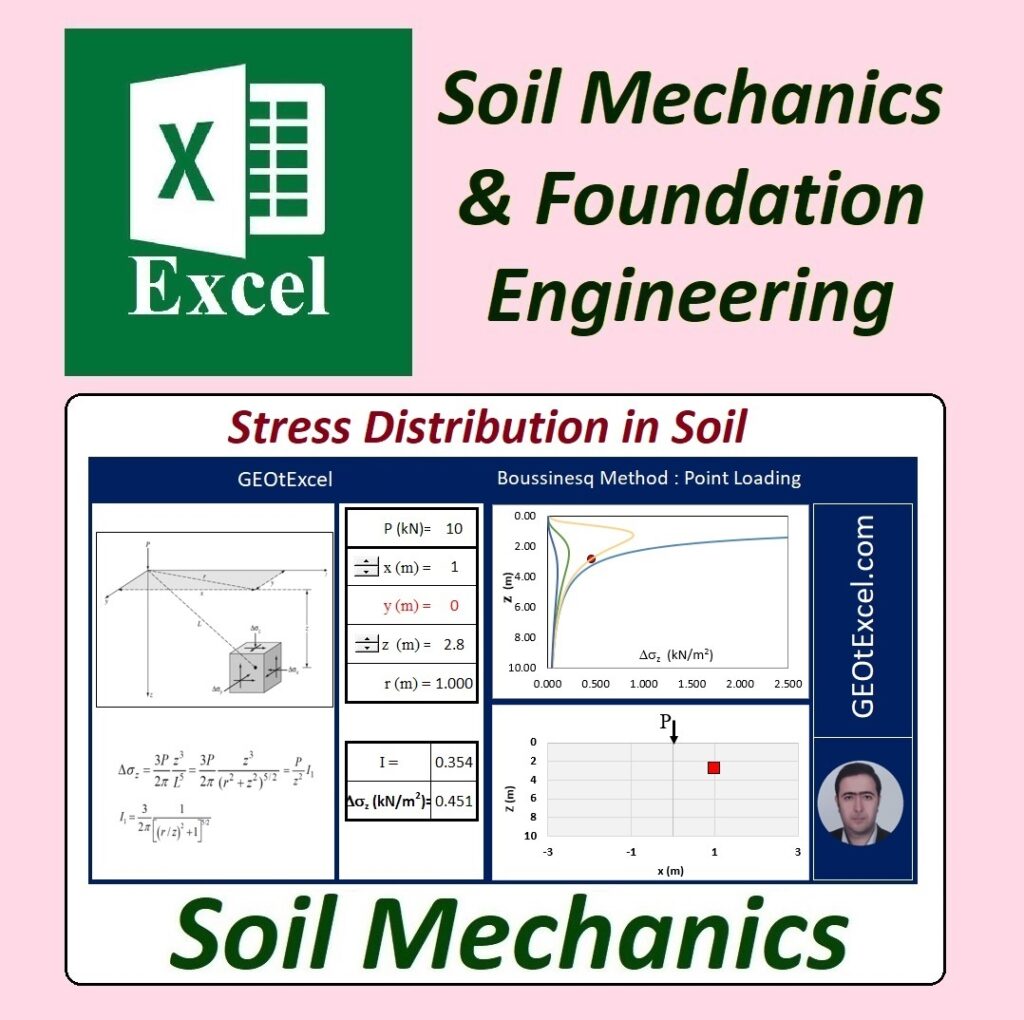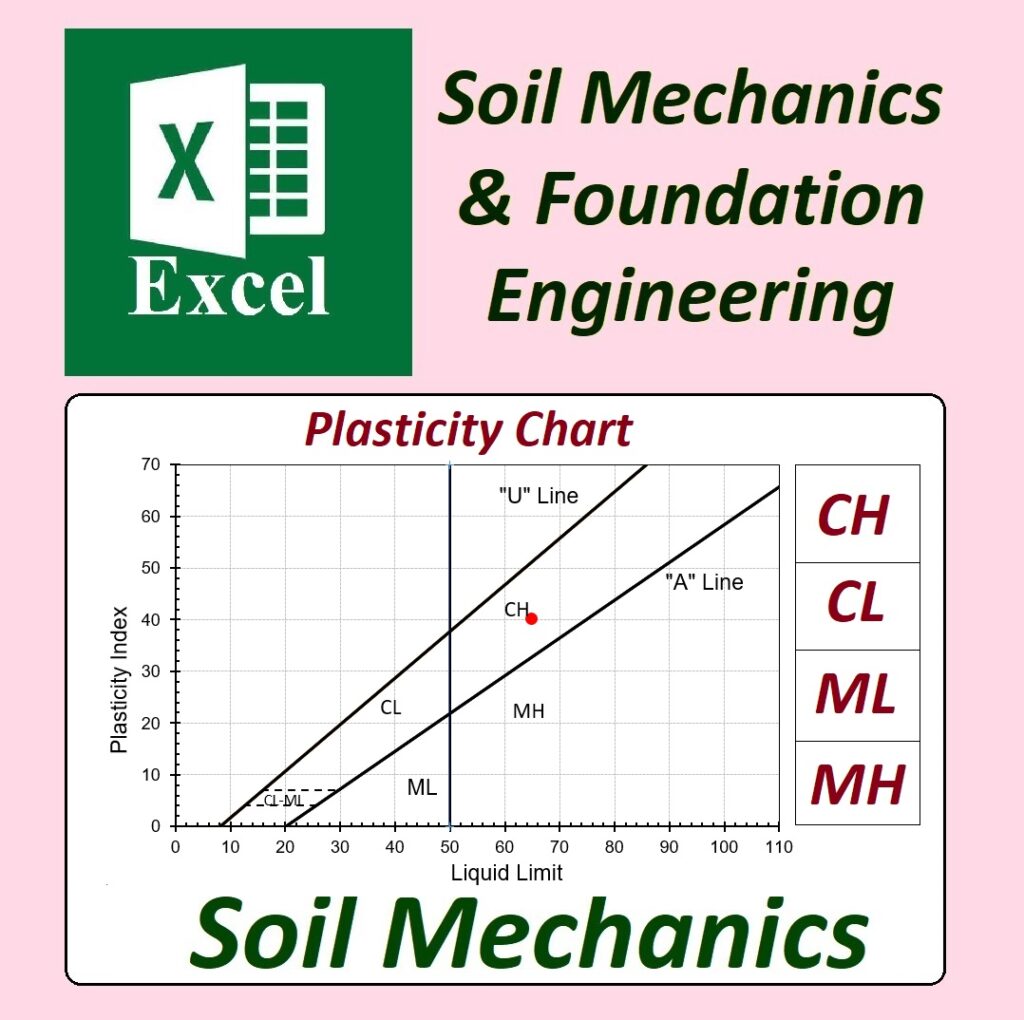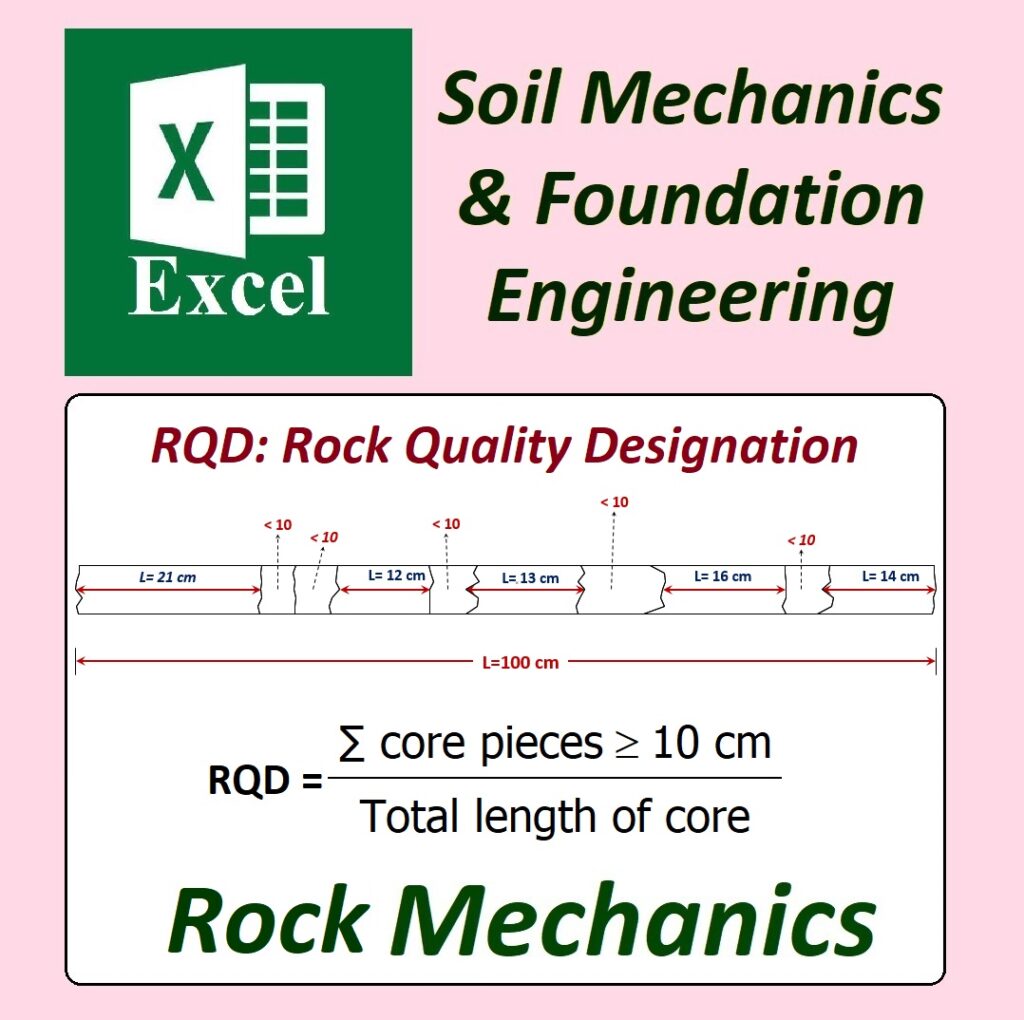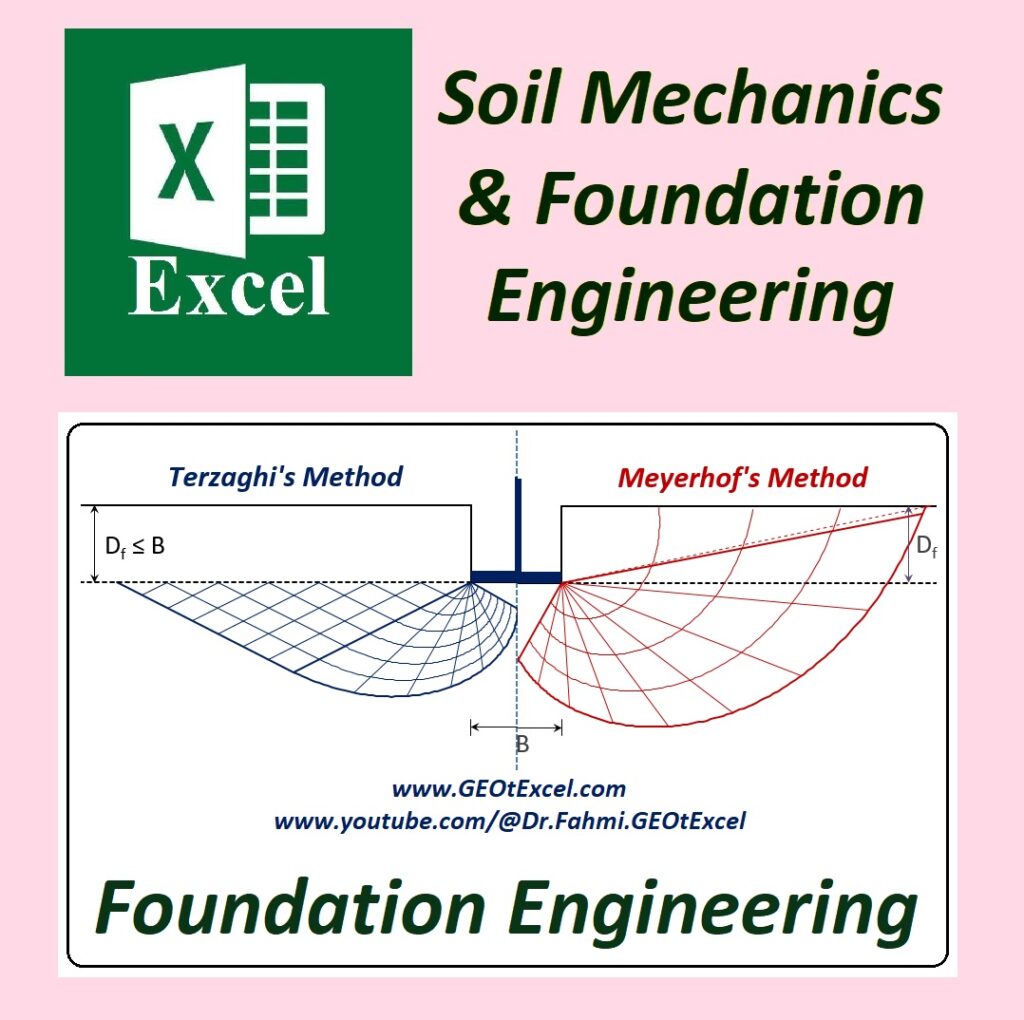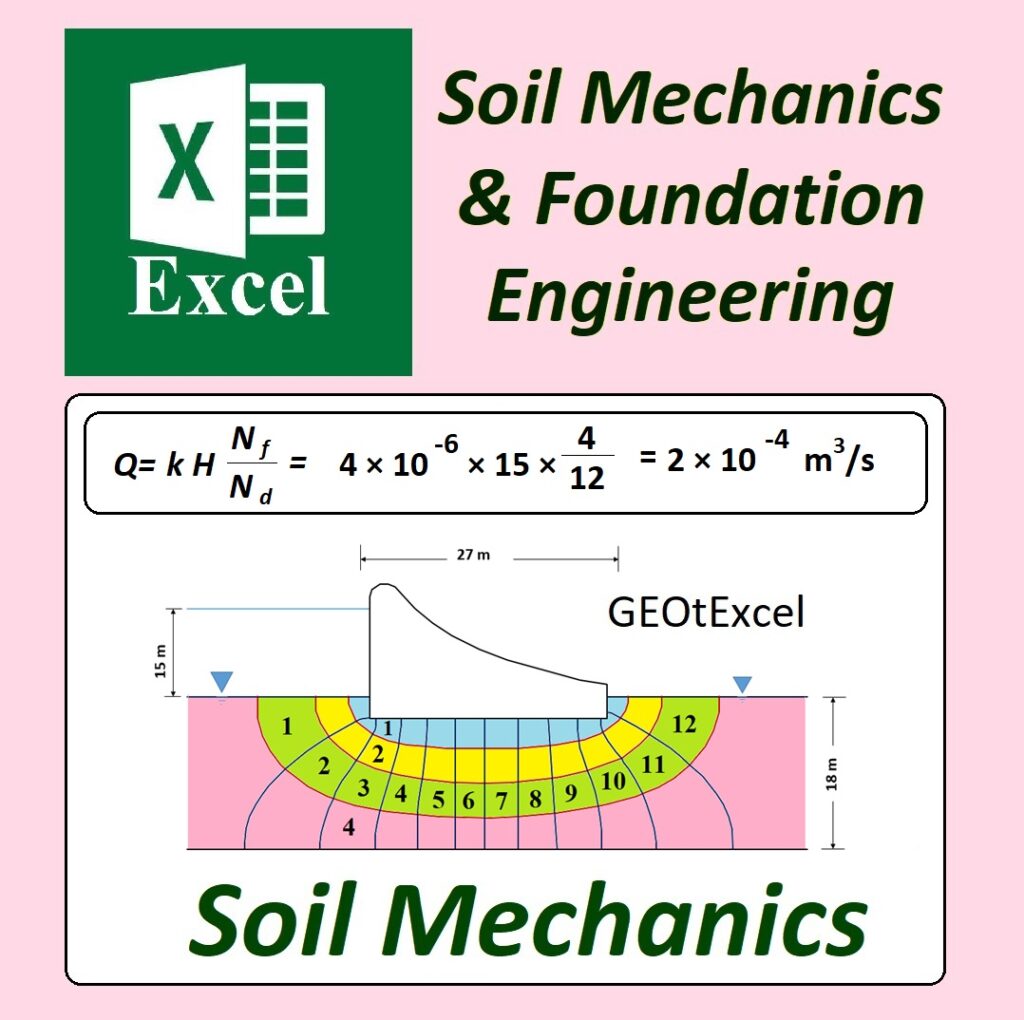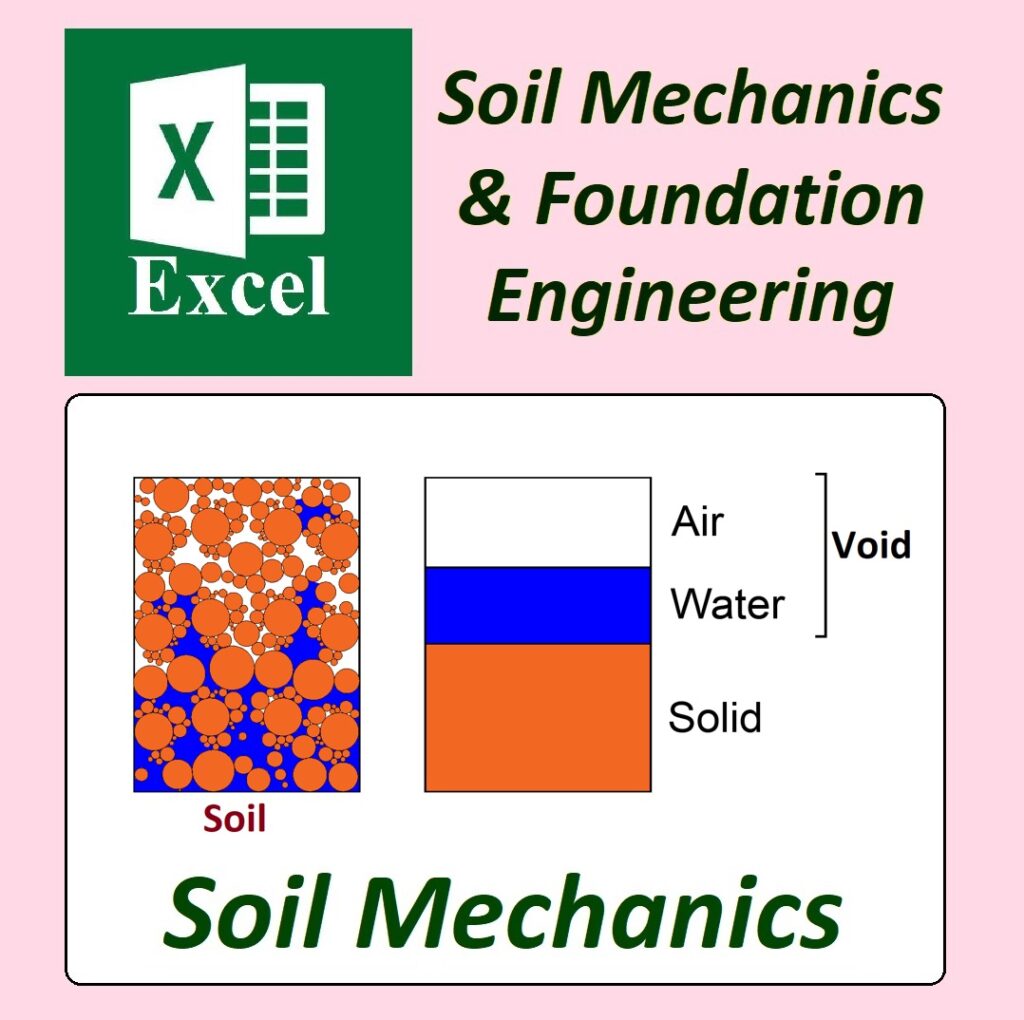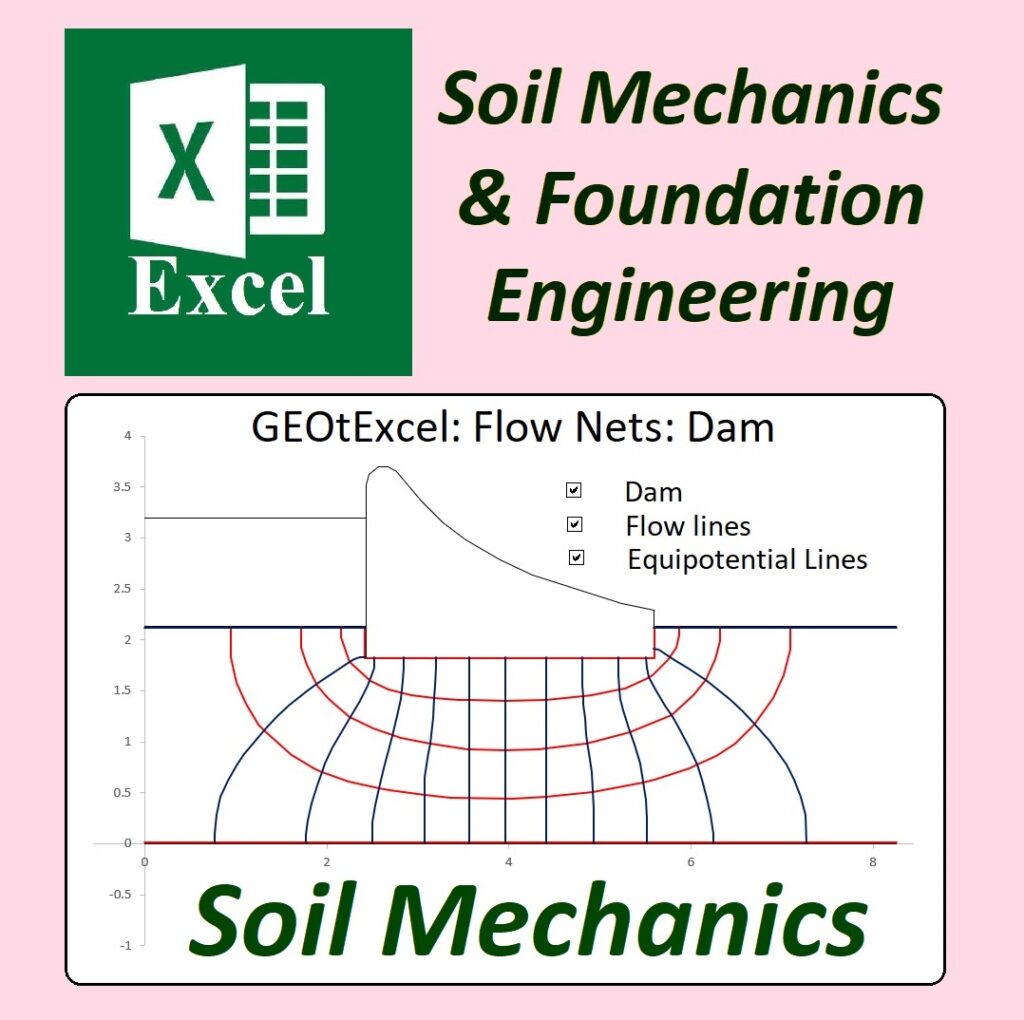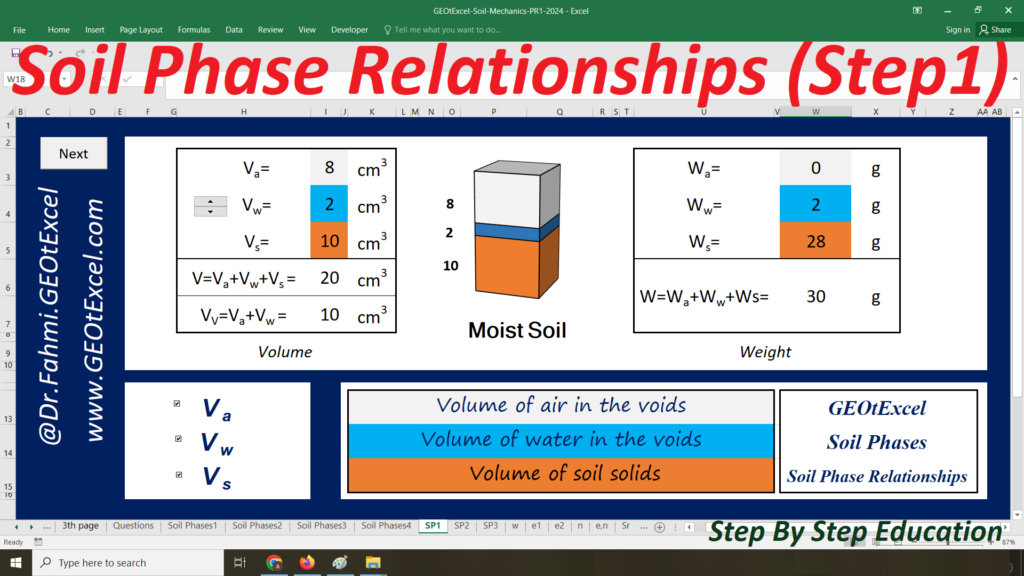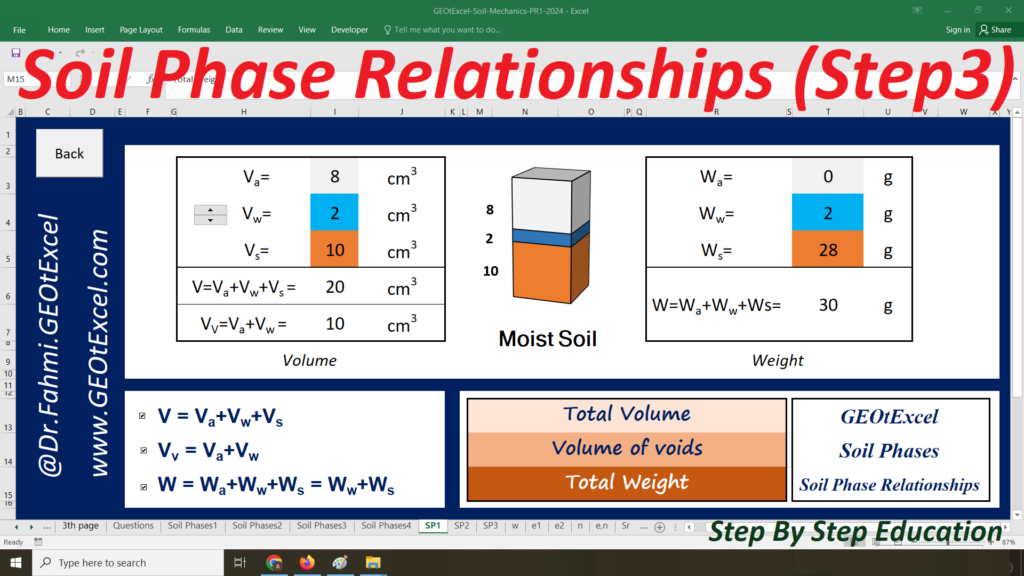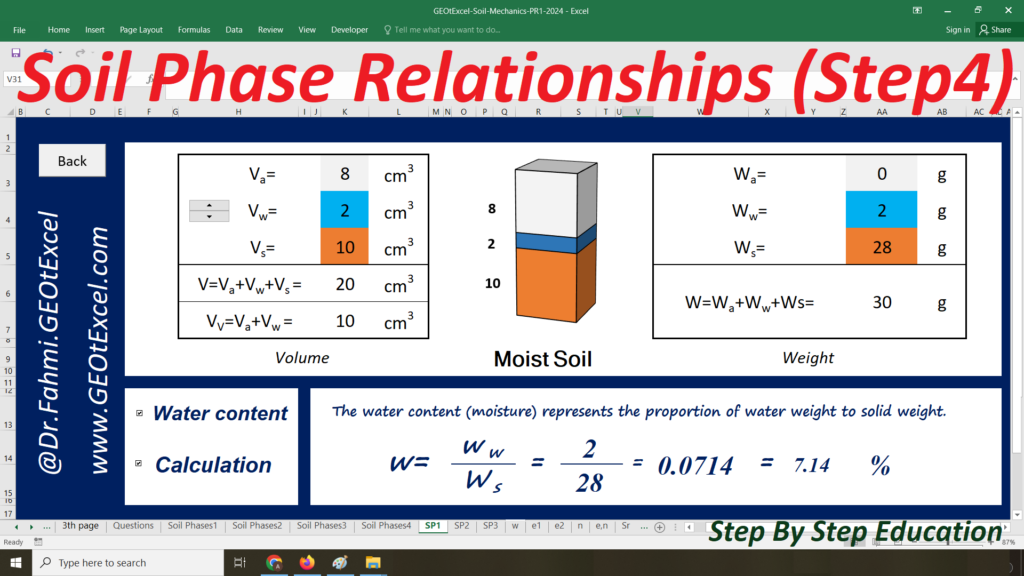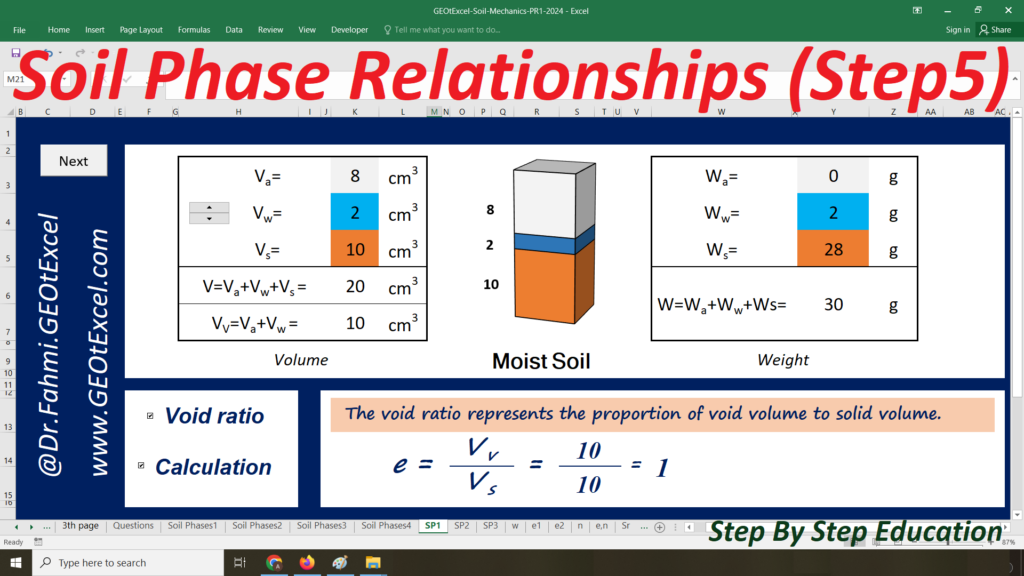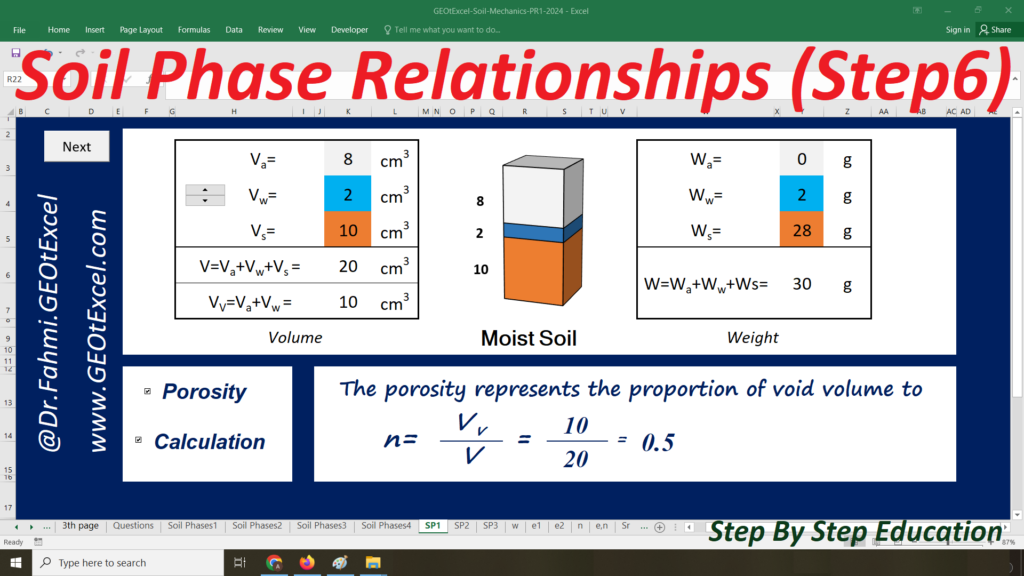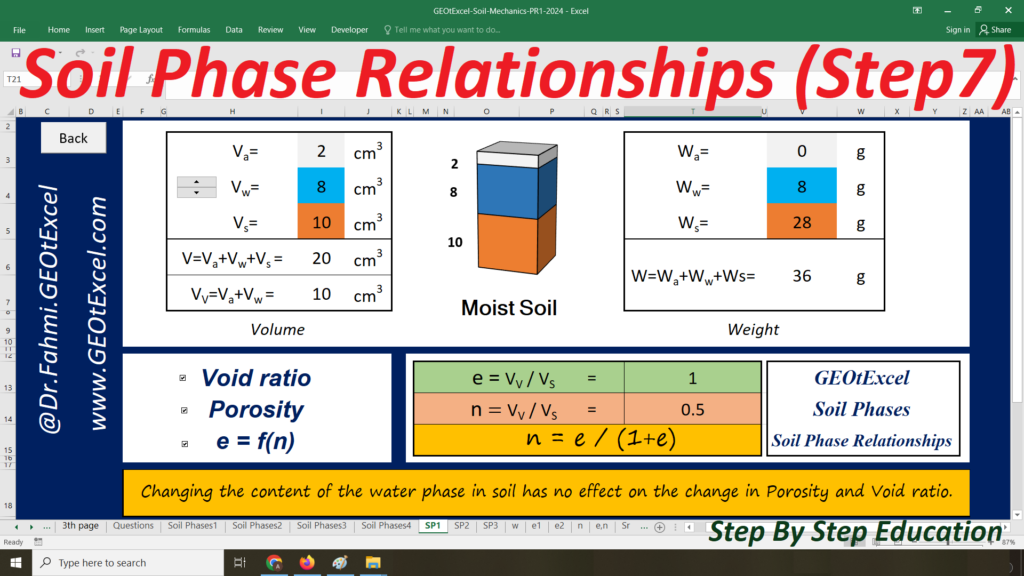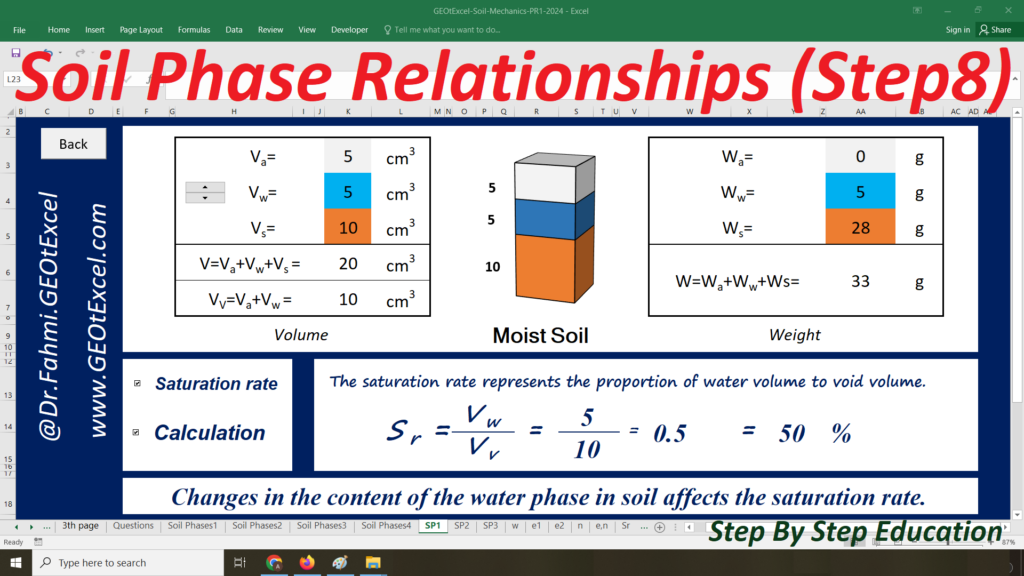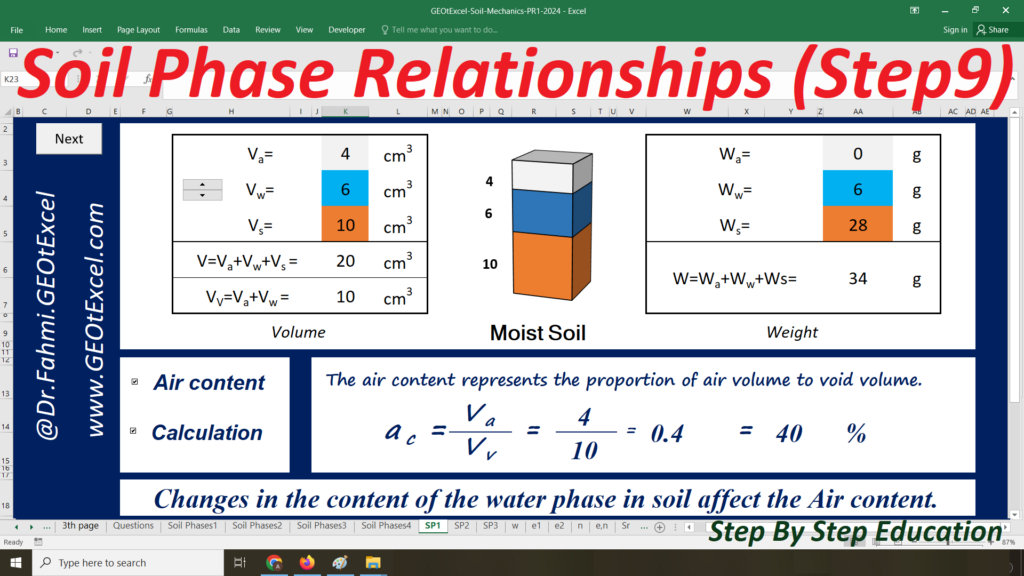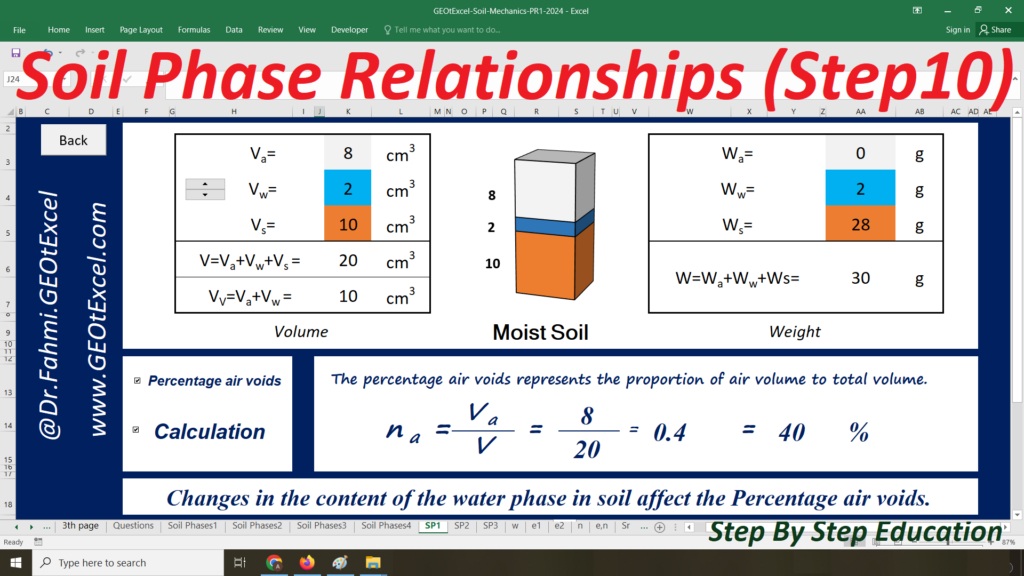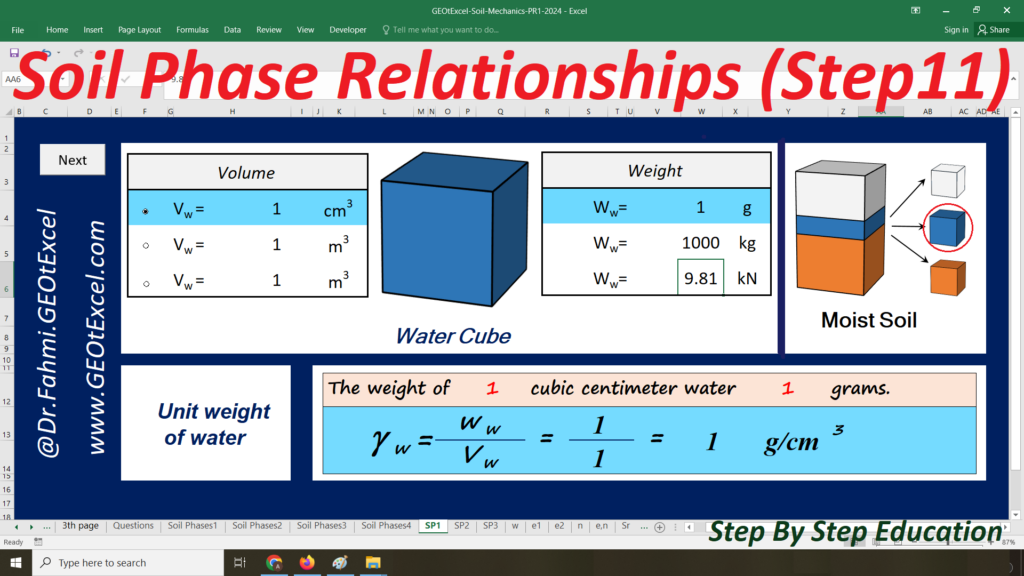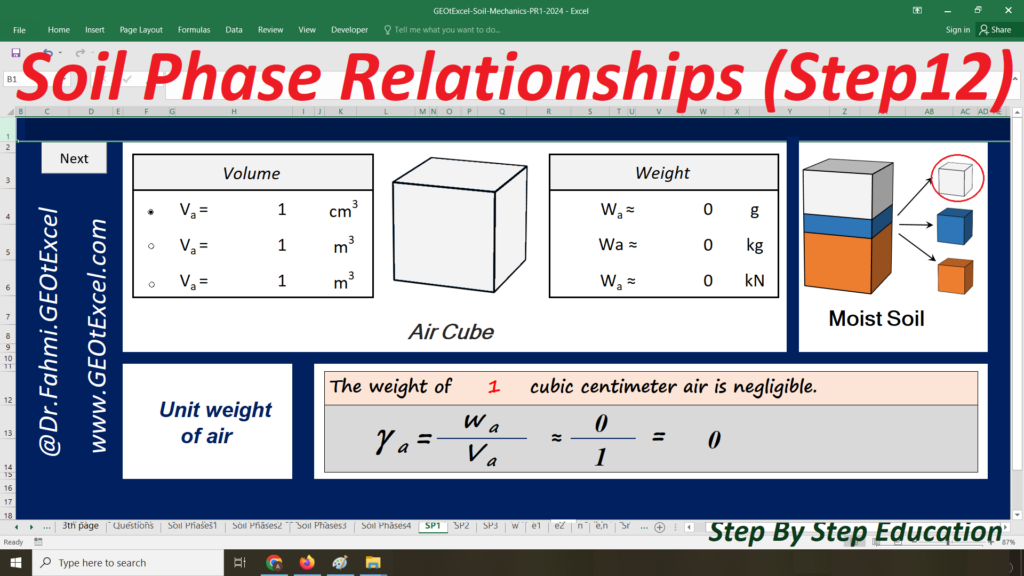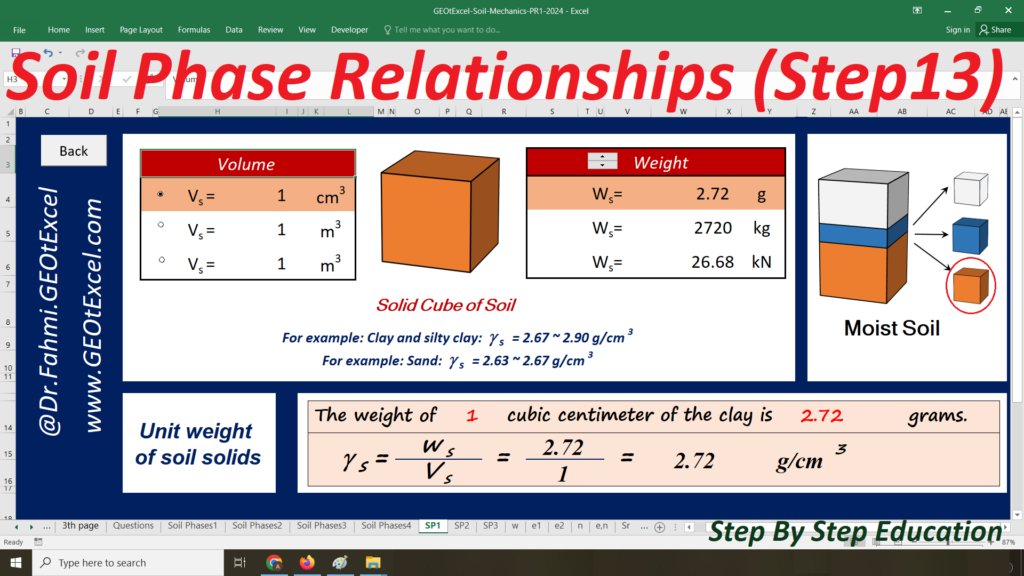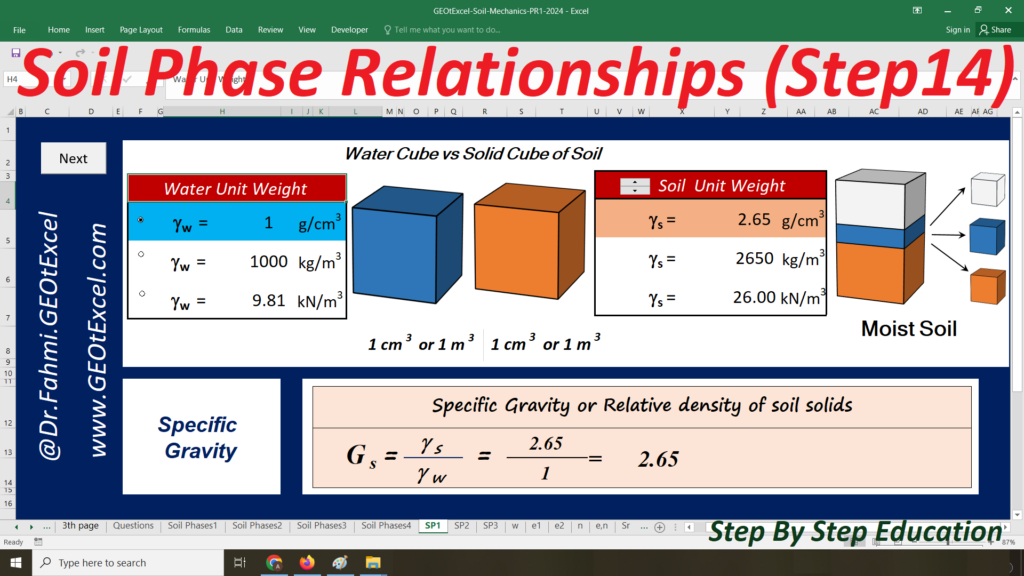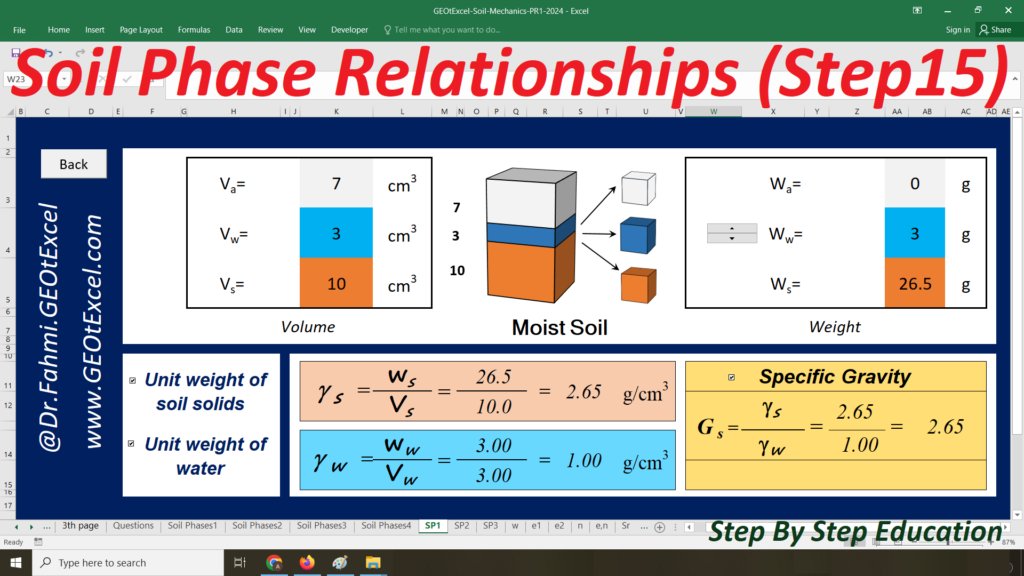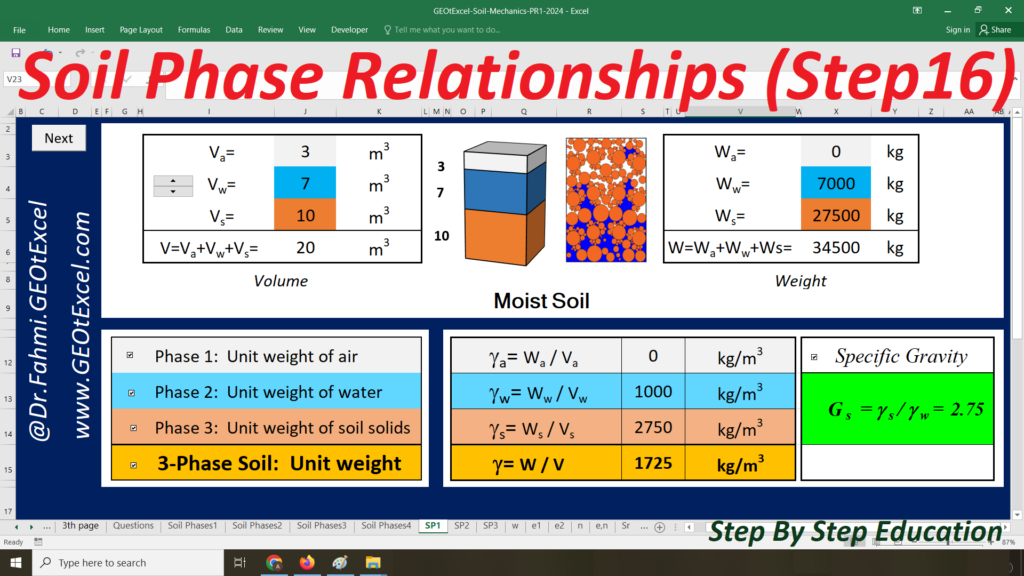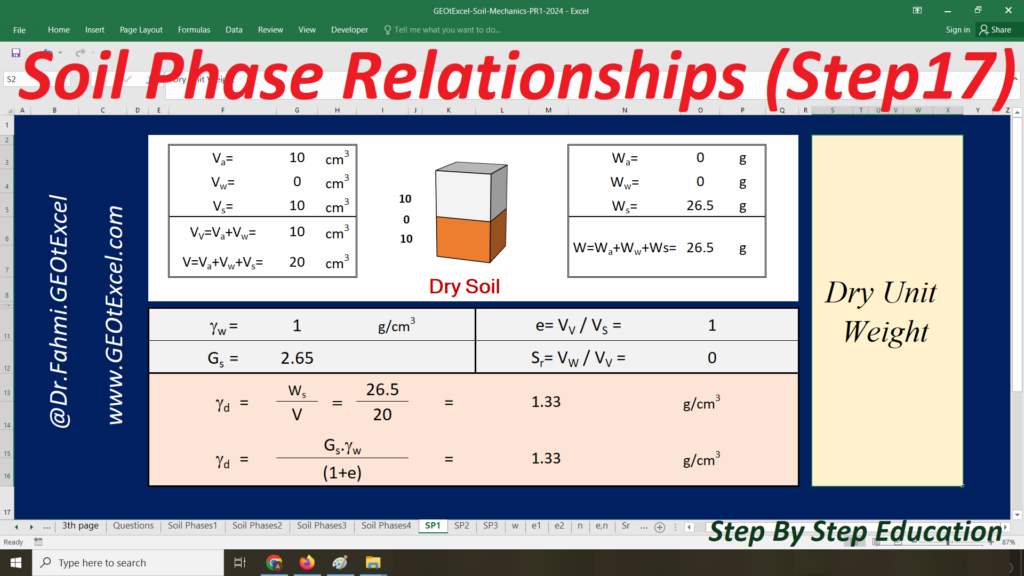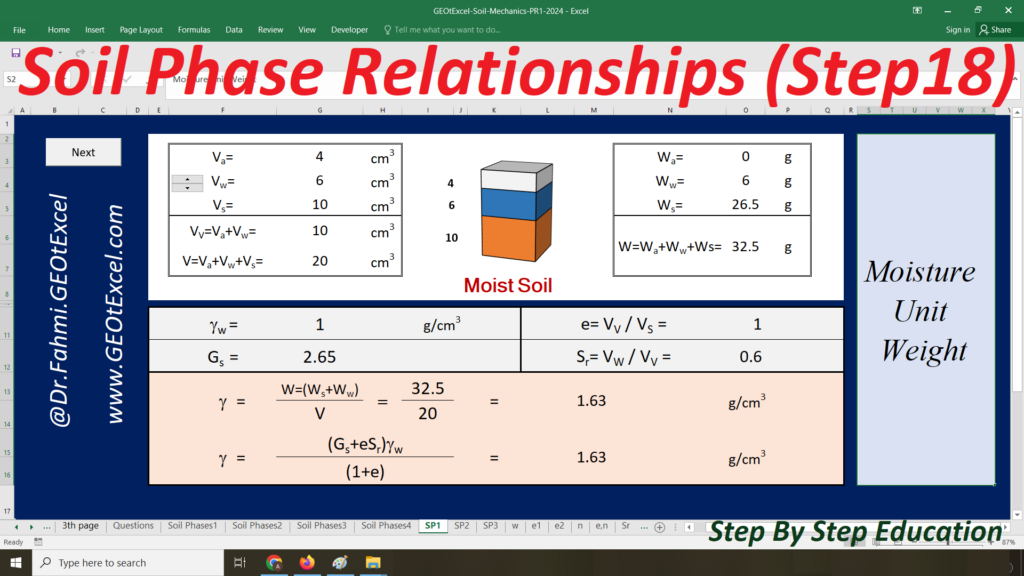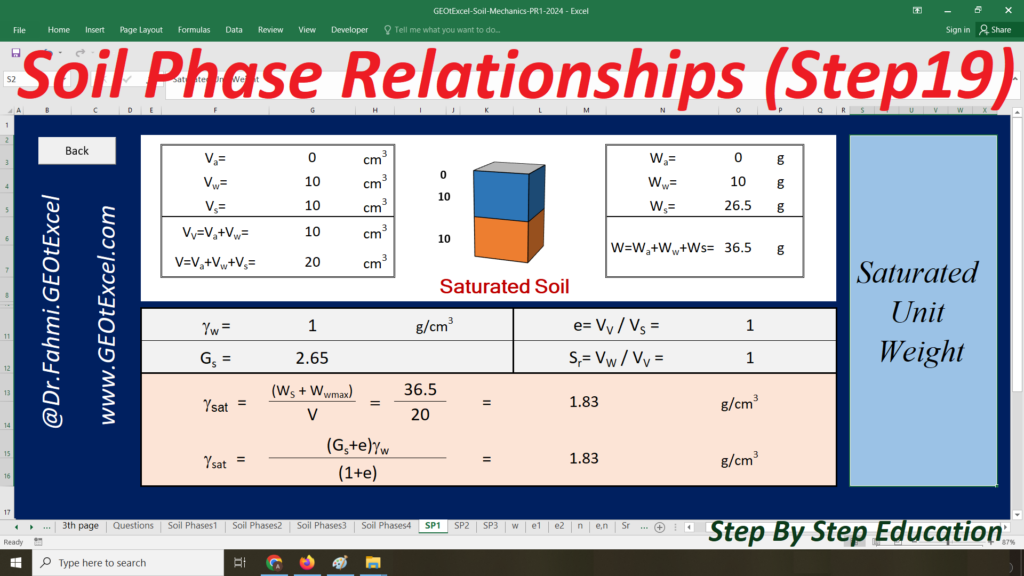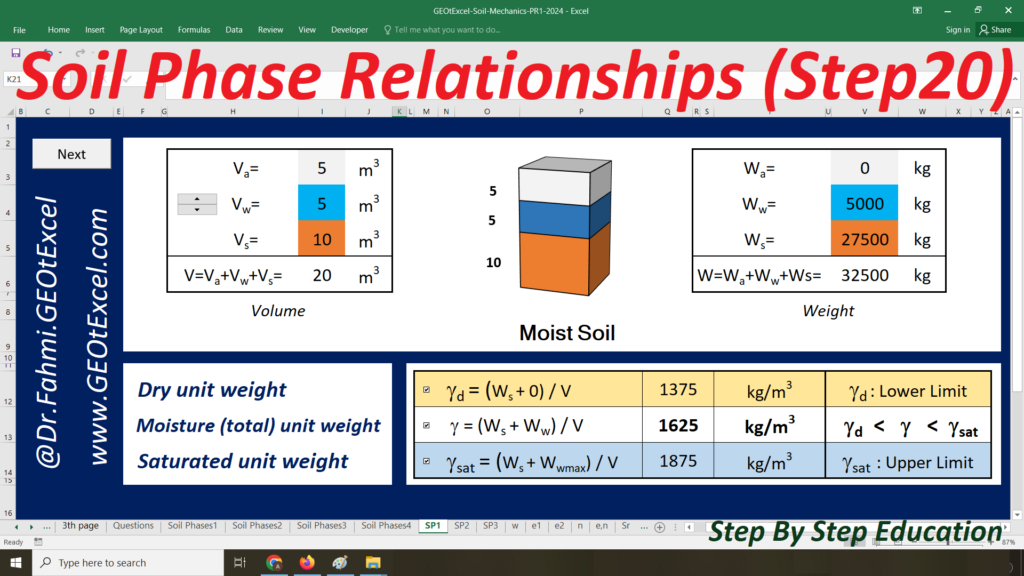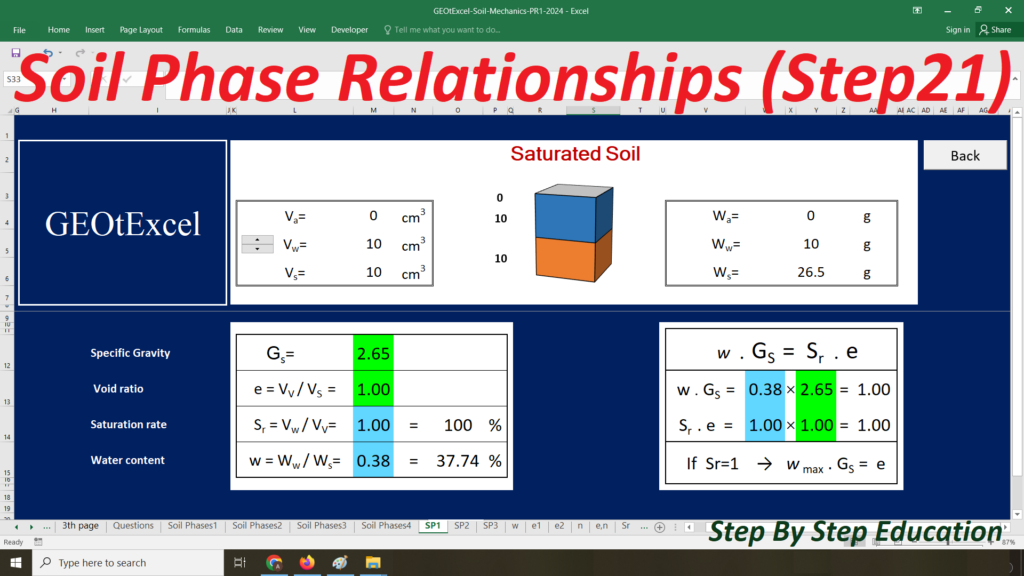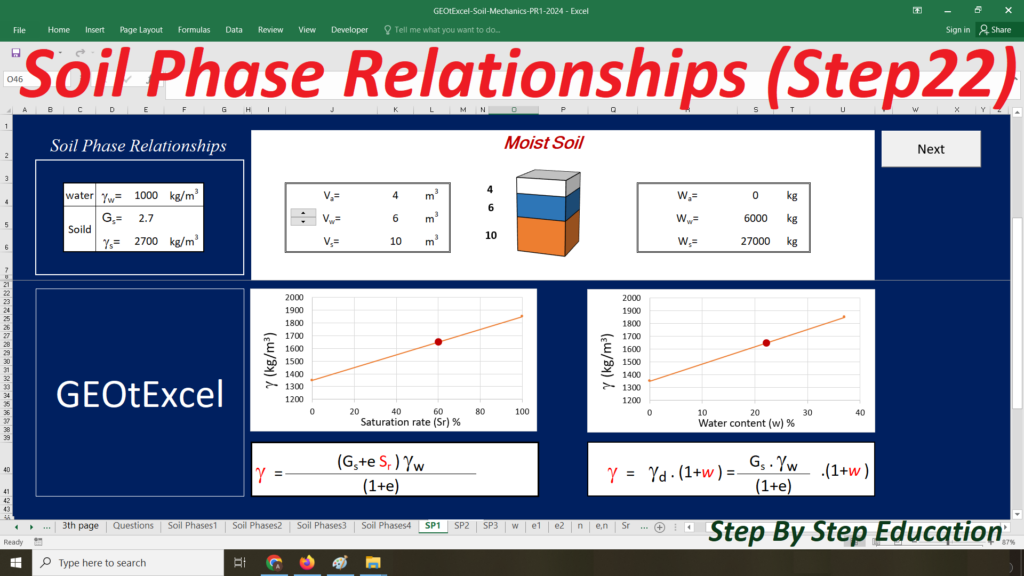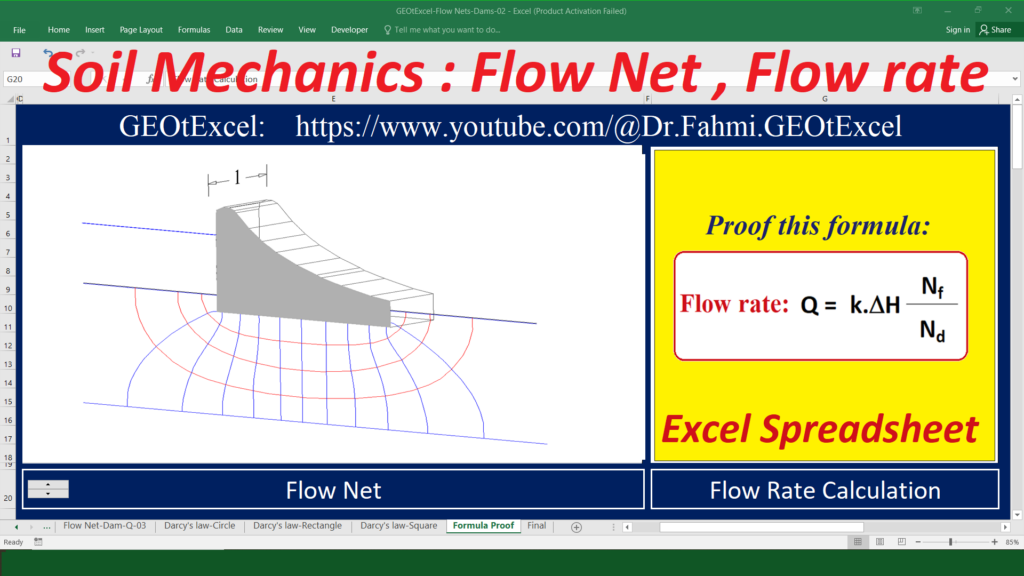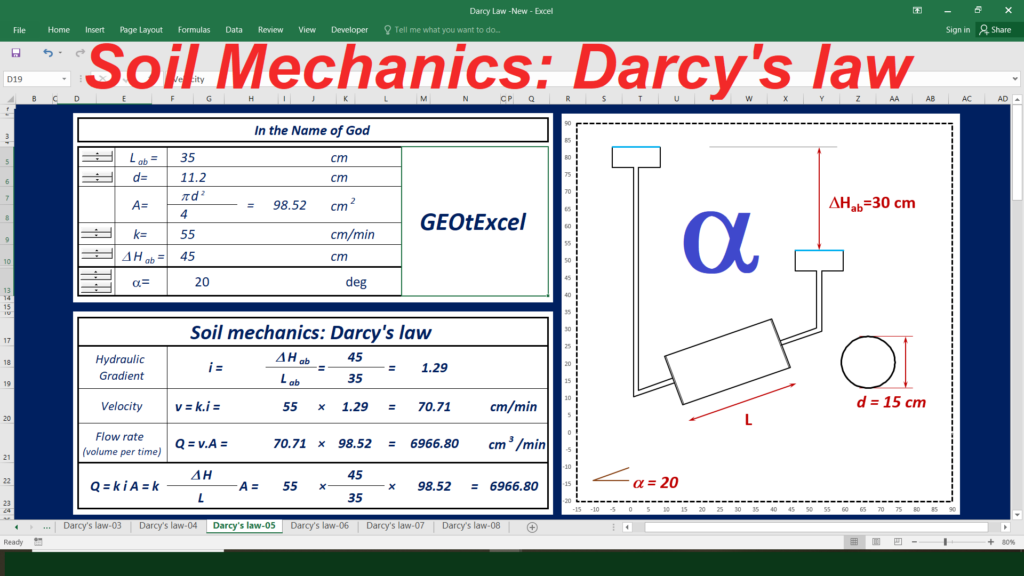Soil Mechanics – Consolidation (Single and Double Drainage) | Geotechnical Excel Spreadsheets
[GEO-2025-0130] – By Dr. Ahmad Fahmi
We are excited to introduce the Consolidation spreadsheet pack for single and double drainage scenarios as part of the Geotechnical Excel Spreadsheets (2025-1) collection. This set includes 5 essential spreadsheets designed for soil mechanics calculations, focusing on consolidation under different drainage conditions. The pack includes detailed calculations and graphs for total stress, pore water pressure, effective stress, and provides insights into stress distribution in soil.
What’s Included in the 5 Spreadsheets?
- Start: The introductory sheet for Consolidation, covering single drainage and double drainage methods.
- Single drainage-min: Single drainage Consolidation sheet with Cv unit in cm²/min, with a drainage height of 2 cm.
- Single drainage-day: Single drainage Consolidation sheet with Cv unit in m²/day, with a drainage height of 5 m.
- Double Drainage-min: Double drainage Consolidation sheet with Cv unit in cm²/min, with a drainage height of 2 cm.
- Double Drainage-day: Double drainage Consolidation sheet with Cv unit in m²/day, with a drainage height of 5 m.
Applications in Soil Mechanics and Geotechnical Engineering:
- Calculate consolidation for soil under both single and double drainage conditions.
- Analyze coefficient of consolidation (Cv) in different units: cm²/min and m²/day.
- Single Drainage vs. Double Drainage scenario comparisons for soil consolidation.
- Consolidation testing and fieldwork for soil behavior in various drainage conditions.
- Educational use for soil mechanics and geotechnical engineering courses.
- Practical tool for civil engineers working on foundation and soil stability projects.
📦 Part of Geotechnical Excel Spreadsheets 2025-1 Collection
This product is part of the Geotechnical Excel Spreadsheets (2025-1) suite, featuring:
- 12 groups of spreadsheets
- 50 files for various soil mechanics and foundation engineering calculations
- 470+ spreadsheets
- Secure and permanent access to all files on your computer
- Commercially licensed for professional use
For more information or to purchase, contact us at:
📧 academy.dr.fahmi@gmail.com
🛒 To Buy Geotechnical Excel Spreadsheets and Use It on Your PC:
👉 How to Buy Geotechnical Excel Spreadsheets and Use It on Your PC
🔗 Follow Geotechnical Excel Spreadsheets on Social Media:
👨🏫 About Dr. Ahmad Fahmi
Assistant Professor, Geotechnical Engineering, University of Bonab
Dr. Fahmi specializes in applying Excel-based solutions for soil mechanics, foundation engineering, and geotechnical testing.
📌 Stay Updated:
Subscribe for upcoming lectures on:
- Soil Mechanics
- Foundation Engineering
- Geotechnical Lab Testing
➡️ Subscribe on YouTube

